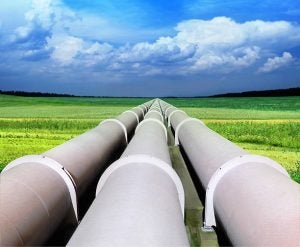 Next month, the New York Public Service Commission will be deciding whether a rate case settlement proposal between National Grid’s upstate gas and electric utility (Niagara Mohawk) and other groups is in the public interest, and whether the proposal is consistent with New York’s Climate Leadership and Community Protection Act. This is the first major utility rate case to be conducted fully under the CLCPA as effective law, and makes clear the need for commission action to implement standards to achieve state climate goals.
Next month, the New York Public Service Commission will be deciding whether a rate case settlement proposal between National Grid’s upstate gas and electric utility (Niagara Mohawk) and other groups is in the public interest, and whether the proposal is consistent with New York’s Climate Leadership and Community Protection Act. This is the first major utility rate case to be conducted fully under the CLCPA as effective law, and makes clear the need for commission action to implement standards to achieve state climate goals.
But there is a cloud hanging over this proposal: the utility rate case paradigm guiding this proceeding is outdated and inconsistent with New York’s climate goals.
There is no question that to achieve the CLCPA targets — to reduce New York greenhouse gas emissions 40% by 2030 and 85% by 2050, below 1990 levels — natural gas use and combustion must decrease significantly. But the commission has not set clear standards to require that gas utilities plan for this transformational future, or to ensure utility rate applications and outcomes are consistent with the law. Decisive action is needed to address this disconnect.
Long-term planning requirements are needed
The CLCPA was enacted more than two years ago and became effective in January 2020. The law explicitly directs the Public Service Commission to set standards to contribute to achieving the statewide greenhouse gas emission limits. In turn, the commission has recognized the specific need to ensure alignment of gas utility planning with climate policy.
Climate planning is key for New York’s gas infrastructure Share on XThis National Grid settlement proposal is a good example of why business-as-usual rate cases will fall short of state climate goals. The proposal has some strong provisions, like a commitment to strive for net-zero increases in gas usage during 2022-2024 and a program to address large methane leaks on its system with advanced leak detection. But the proposal lacks a clear vision for the future. There is no commitment to plan for significant decreases in gas flows in the years to come, to transition residential and commercial customers off of gas (and into clean electricity) where appropriate, or to adjust the intended life of gas infrastructure that customers will be paying for in the decades to come.
Successful long-term planning will prevent gas utilities from relying on outdated assumptions — such as expecting continuous growth in gas demand — that could lock in infrastructure investments and hinder New York from meeting its climate goals. The commission initiated a proceeding last year to develop new planning standards for gas utilities consistent with the CLCPA. But, after Department of Public Service Staff issued a detailed planning proposal earlier this year, and Environmental Defense Fund and other advocates presented detailed recommendations to improve the proposal, the process has stalled. The commission must move to establish a clear next step.
Rate case reviews must be climate-focused
Under the CLCPA, state agencies must determine whether their actions and approvals are consistent with achieving New York’s greenhouse gas emissions limit, and that such actions do not disproportionately burden disadvantaged communities — those minority and low-income groups that bear the greatest burdens of negative public health effects, environmental pollution and impacts of climate change.
In a recent decision, the commission correctly concluded that this requirement applies to orders in utility rate cases. But clear standards are needed to fulfill this requirement, or the commission cannot expect to see transformational climate progress in rate cases.
Gas utilities, DPS Staff, and other stakeholders need clarity to understand how to comply with this requirement. As parties engage in lengthy settlement negotiations in rate cases, the quality of settlement proposals could be greatly improved if the commission provided clear guidance on what is needed to demonstrate alignment with the greenhouse gas emission reduction and equity objectives of the CLCPA.
EDF’s Gas Company Climate Planning Tool, developed by MJ Bradley & Associates, is a powerful example of a framework that can enable regulators, gas utilities and the public to understand and assess the lifecycle greenhouse gas emissions of gas utilities.
It is time for the commission to stop making decisions in the dark and shine a light on gas utilities. As it deliberates over the Niagara Mohawk rate case, it should recognize that this is a moment of challenge and opportunity. Right now, there is no public framework guiding rate case decisions under the climate law. The commission must move forward with requiring long-term gas utility planning and establish clear standards for rate case proposals to show consistency with New York’s greenhouse gas emission limit and to prevent disproportionate health and environmental burdens on communities.









